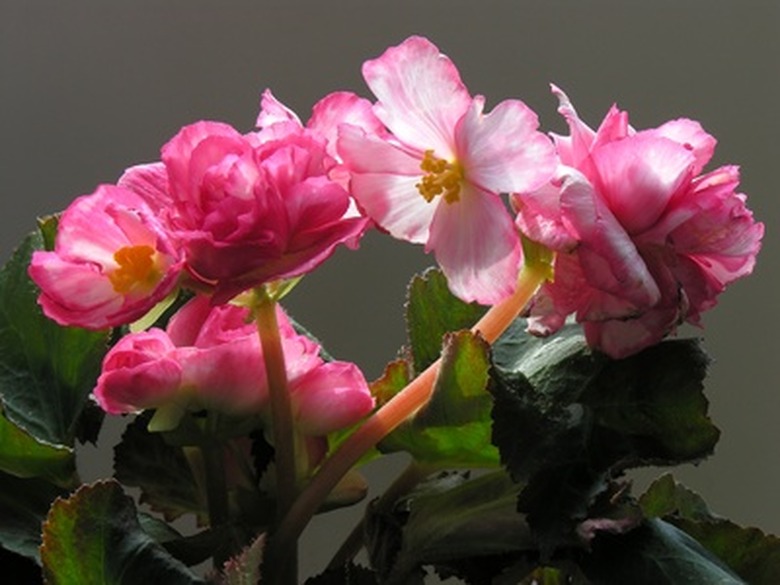Begonia Toxicity
Begonias are summer-flowering plants closely related to gloxinias. They are descended from tropical plants, and native to rain forests and hot tropical areas, so have a reputation for cold intolerance and difficulty. The flowers grow best in temperatures of 70 to 80 degrees Fahrenheit, which leads many homeowners to grow them indoors. Because begonias are toxic, any homeowner should handle them with some caution.
Begonia Tubers and Rhizomes
Begonias start as tubers, or bulb-like growths, which contain the necessary growing material for the plant. Tubers are hardier than seeds, and are best planted in February, in peat moss or quick-draining soil. These tubers are also the best way to transplant begonias once they've established.
- Begonias are summer-flowering plants closely related to gloxinias.
- The flowers grow best in temperatures of 70 to 80 degrees Fahrenheit, which leads many homeowners to grow them indoors.
Growing Needs
Begonias are extremely cold sensitive and must stay indoors after the last frost of the season. They require modestly filtered sunlight, and do well in protected areas of the garden, in either pots or under shade trees. According to the Learning Store, begonias only need morning sun to thrive and grow.
Begonia Toxicity
According to North Carolina State University, every member of the family Begoniaceae is mildly toxic. The most toxic pieces of the plant are the rhizomes, tubers and roots.
Effects and Symptoms
North Carolina State University states that begonia toxicity is non-fatal, even if a gardener or pet swallows the plants. Symptoms include burning mouth, throat, lips and tongue, accompanied by some swelling and difficulty speaking. At worst, a person experiences nausea and vomiting.
- Begonias are extremely cold sensitive and must stay indoors after the last frost of the season.
- North Carolina State University states that begonia toxicity is non-fatal, even if a gardener or pet swallows the plants.
Poisoning
Begonias poison only those people and animals who physically eat the plants or tubers. Handling the plants is harmless, though gardeners should wash their hands after handling or pruning, to avoid transferring the oil of the begonias to food or face.
Begonia
Choose a spot with some shade or filtered sunlight, ideally a sheltered area near a house or fence; eastern exposures work best. Check soil pH with a soil testing kit, looking for an optimum level for begonias, which do well in a slightly acidic soil, with a pH between 6 and 7. Add sulfate to soil to make it more acidic. Plant begonias in early spring when there is no further danger of frost. Plant seeds or tubers, the narrow end facing up, just below the surface. Water the plants daily if necessary, when the top inch of soil dries. They will need less watering in cooler weather. Keep the roots from drying out. Fertilize with a balanced fertilizer. Dilute the fertilizer to half-strength and apply the diluted mixture every two weeks. Pinch off spent flowers as you notice them.
- Begonias poison only those people and animals who physically eat the plants or tubers.
- Handling the plants is harmless, though gardeners should wash their hands after handling or pruning, to avoid transferring the oil of the begonias to food or face.
References
- Brad's Begonia World: Growing Begonias Indoors, Brad Thompson
- Ohio State University Horticulture & Crop Science: Begonia x semperflorens-cultorum
- Begonias: Begonia Growing Notes From Joan Coulot, Sacramento Branch ABS
- National Gardening Association: The Begonia Show-Offs
- University of Vermont Extension Department of Plant and Soil Science: Growing Begonias
- University of Florida, IFAS Central Florida Research and Education Center: Begonia Production Guide
